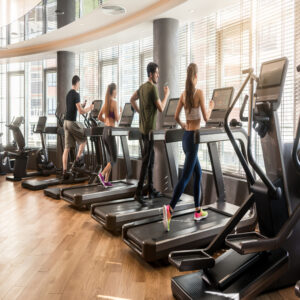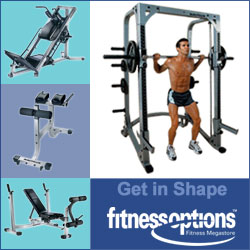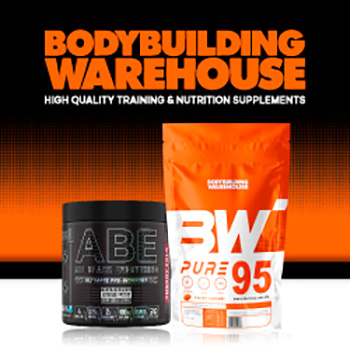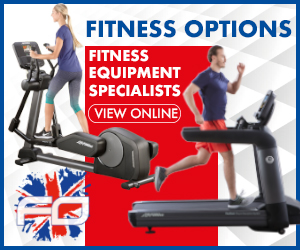Pro-Level Athlete Workout Routine Tips & Struggles

Key Takeaways
- Professional athletes typically include a workout routine in their training, exercising 4-6 hours daily using structured periodization plans that cycle between different intensity phases throughout the year.
- The 80/20 principle guides elite training 80% moderate intensity work and 20% high intensity sessions preventing burnout while maximizing performance gains.
- Recovery is not optional for pros, it’s programmed with the same precision as workouts, including mandatory sleep protocols and specialized techniques like contrast therapy.
- Mental conditioning separates good athletes from great ones, with visualization and mindfulness practices forming essential components of professional training regimens.
Train Like a Pro: The Unfiltered Reality of Elite Athlete Workouts
The alarm sounds at 5:00 AM. While most people hit snooze, pro athletes are already lacing up their shoes. What happens next isn’t the glamorous montage you see in commercials. Instead, it’s systematic, often gruelling work built on decades of sports science and personal experience. Professional training isn’t about random acts of extreme effort. It’s about the strategic implementation of proven methods with relentless consistency.
Take a close look at the routines of Olympic gold medallists, NFL stars, or elite marathon runners, and you’ll see a common thread that transcends the sport specific differences. These athletes don’t just work harder they work smarter, with carefully calibrated training loads, recovery protocols, and progression models. The reality is that most pro-level athletes spend more time planning and recovering than they do performing their most intense work.
Even though social media showcases amazing displays of strength or stamina, the truth is it requires a deep focus on the basics. There is careful handling of training aspects and a level of body consciousness that is almost scientific. Pro athletes approach their training more like a game of chess than a fight. Every move is thought out, every session has a goal, and nothing is left to luck.
What Sets Apart the Training Regimes of Professional Athletes
- Warm-ups that are designed with the day’s training in mind (15-30 minutes)
- Developing technical skills that are specific to the sport (30-90 minutes)
- Main training sessions that target specific physical attributes (60-120 minutes)
- Strategic timing of meals around workouts
- Recovery periods that include mobility, tissue work, and regeneration protocols
- Secondary training sessions (if necessary) that address complementary systems
- Mental conditioning practices, including visualization and mindfulness
The first major difference between professional and amateur training routines is that every minute serves a specific purpose. Professional athletes don’t just show up at the gym and decide what to train. Instead, they follow carefully designed plans that fit into larger weekly, monthly, and yearly plans. Each day’s training builds on the previous day’s work and prepares the body for future adaptations. This isn’t about choosing exercises at random or following the latest trends.
Another major difference is the focus on readiness assessment and adaptation. Pro athletes consistently assess their recovery status, often using complex measures like heart rate variability, grip strength tests, or jump performance. Training isn’t strictly adhered to regardless of condition it’s adjusted based on the athlete’s current state. If markers suggest incomplete recovery, the day’s work might switch from high intensity to technical focus or regenerative activities.
Professional athletes know that consistency is more important than intensity. Many amateur athletes believe that the more exhausted they are after a workout, the better. However, pros understand that steady, progressive training is what really produces results. The goal is not to have one amazing workout. Instead, it is to create a routine that allows for ongoing improvement over time.
The Key to Consistent Performance: Structured Periodization
The backbone of any professional workout routine is periodization, or the systematic planning of athletic training. Instead of sticking with one type of training all year, pros go through different phases, each with its own goals. The traditional model usually includes preparatory, competition, and transition periods. However, modern methods often use more detailed structures. This cyclical method helps avoid plateaus, lowers the risk of injury, and ensures peak performance when it matters most.
These training cycles, developed by top level coaches, are structured to improve various physical attributes. The sequence is logical. The initial phases often focus on building work capacity and structural strength. The middle phases may concentrate on power and sport specific conditioning. The later phases, on the other hand, fine tune competitive performance and technical execution. Each phase builds on adaptations from previous cycles, resulting in a comprehensive development system.
What sets pro-level workouts apart isn’t just having a structured plan it’s the complexity of how factors like volume, intensity, frequency, and exercise selection interact within that structure. Pro-level periodization includes strategic de-loading, planned variation, and precisely timed intensification periods that balance stress and recovery. This careful approach guarantees steady progress while avoiding the overtraining that often affects dedicated amateurs.
Double Training Days: The Strategy Behind Pros’ Double Sessions
Double training days are a staple of professional sports, but they’re not just about working harder. Instead, pros use double sessions to focus on different physiological systems. They hone technical skills when they’re not fatigued or speed up adaptations during key training periods. For instance, a morning session might build strength or power when the nervous system is at its peak. An afternoon session might be geared towards aerobic capacity or flexibility.
Despite what you may think, most professional athletes don’t do two a day workouts all year. These intense training times are strategically put into the larger periodization model. They’re often during the pre-season prep or specific adaptation blocks. The secret to making this work is managing the relationship between the workouts. Complementary training that doesn’t cause too much overlap or systemic fatigue is crucial. Recovery methods between workouts become extremely important. They include nutrition, hydration, and often active recovery techniques that bridge the gap.
If you’re a fitness junkie who wants to train like a pro, adding a second, lighter workout to your day can be a game changer. This workout should be less intense, shorter, and focus on different areas than your main workout. This way, you can increase your workout volume without burning yourself out. This can lead to faster results if you’re recovering properly.
The 80/20 Rule: How Professionals Manage Intensity and Volume
The 80/20 rule is one of the most counterintuitive aspects of professional training. Approximately 80% of work is done at relatively moderate intensities. Meanwhile, only 20% involves truly high intensity efforts. This distribution is especially apparent in endurance sports but applicable across disciplines. It contradicts the popular belief that elite performance requires constant maximum exertion. The approach allows for greater total training volume, enhanced recovery, and more sustainable progression. This is compared to high intensity dominant programs.
Intense workouts put a lot of stress on your body. This means you need more time to recover and can’t do them as often. By saving these high intensity workouts for when they're really needed, athletes focus most of their training on moderate workouts. This way, professional athletes can do the amount of training they need to improve without overdoing it. This balance helps them avoid burnout and injuries that often happen to people who only do high intensity workouts.
When it comes to training like a pro, knowing how to distribute intensity is a key change to make. Instead of judging a workout by how tired or sore you are, focus on hitting the exact intensity needed for the goal. Sometimes that’s all out, but more often it’s controlled, sustainable work. This lays the groundwork for future performance. Better Me’s training systems focus on this balanced approach. They help athletes avoid the common pitfall of too much intensity that leads to diminishing returns.






